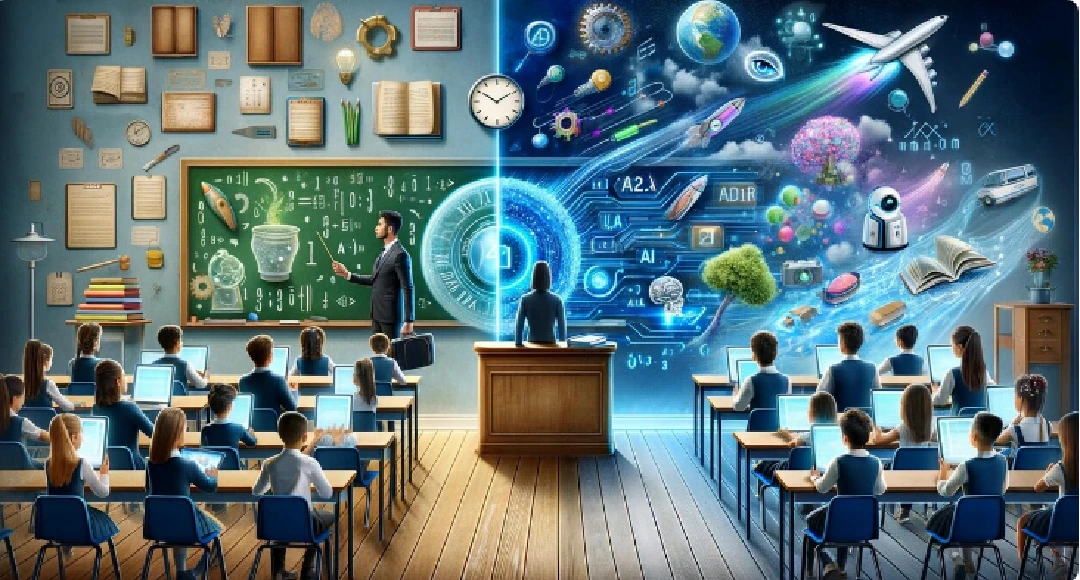Artificial Intelligence (AI) is a buzzword across industries, and education is no different. From personalized learning apps to intelligent tutoring systems, AI-dominated solutions are touted as the future of how students learn and how educators teach. But is this lightning-fast introduction of AI into the classroom a true game changer — or just another overhyped gimmick? Let’s break it down.
What Is AI in Education?
Reason 1: What Is AI in Education? It includes a vast array of tools and applications, such as:
Adaptive learning systems that adjust content delivery according to students’ performance.
Online grading generators that save time, and increase uniformity.
24/7 student support chatbots for common queries
Predictive analytics that flags at-risk students.
Speech recognition-based language learning apps with instant feedback.
These technologies are designed to make learning more individualized, streamlined, and accessible.
A Virtual Version: The Case for AI in the Game
At Scale Personalized Learning
Every student learns at a different speed and in a different manner. AI systems can track student performance in real time and adjust the curriculum. Whether it’s recommending extra material or rephrasing difficult ideas, AI could give every pupil a custom-tailored educational route—one that would be impossible for a sole teacher in a thirty-person classroom.
24/7 Support
AI-driven virtual assistants and chatbots are 24/7. Students can obtain assistance on homework, clarify doubts, or review a lesson at any time, which can be especially useful in remote learning environments or for students in different time zones.
Time-Saving for Educators
As a result, organizations are using artificial intelligence to automatically grade multiple-choice tests and even specific written assignments, which saves teachers time for more meaningful teaching-related activities such as designing lessons and interacting with students.
Data-Driven Insights
It allows the process to gather huge amount of information and helps students in their academic and behavioral performance. This is useful for the early identification of learning difficulties or behavioral issues, who can then be addressed.
The Other Side: Why Do Some Call It a Gimmick?
But not everyone is convinced that the answer lies in a silver bullet in AI in education.
Lack of Human Touch
Teaching and learning involves more than simply dumping knowledge—it is to be inspiring, challenging, mentoring and supportive. AI may be able to mimic responses, but empathy and intuition are essential tools of a teacher that it simply cannot replicate.
Bias in Algorithms
The data they are trained on is crucial to the performance of AI systems. All of this impacts the quality of the data; if the dataset is biased, then so will the results it returns This can perpetuate stereotypes and yield biased academic assessments, particularly within multicultural classrooms.
Accessibility and Equity
Not all schools have the ability to use their advanced AI tools. There’s a real danger of exacerbating the digital divide, whereby better-resourced schools receive smarter tech while poorly resourced ones get left even further behind.
Privacy Concerns
Many AI systems need a lot of student data to work well. This creates serious issues with privacy and security, without strict data protection measures in place.
So, Game-Changer or Gimmick?
The reality is — it’s a little of both.
AI in education can truly be transformative and advantageous if it is employed with careful and ethical consideration. It could help make learning more personalized, inclusive, and efficient. But it won’t replace teachers or be a magic wand that will solve all educational woes.

AI’s real power is its potential to assist, not replace, human teachers. When used alongside trained educators who can use and act on AI recommendations, it can have positive effects on student learning. As with any nascent technology, there are both possibilities and perils to AI in education. It is essential to take this with a pinch of salt — understand what it can do but also what it cannot. If done wisely and accompanied by ethical guidance and ongoing assessment, AI can be a real game-changer. But it risks becoming just another passing trend without those.
Working closely with educators, policymakers and tech developers together is essential for the consideration of AI and ensuring AI serves its true purpose — to aid teachers, and students, alike in their learning journey
Read also: RRB NTPC 2025 How to Prepare with the New Exam Date timeline












